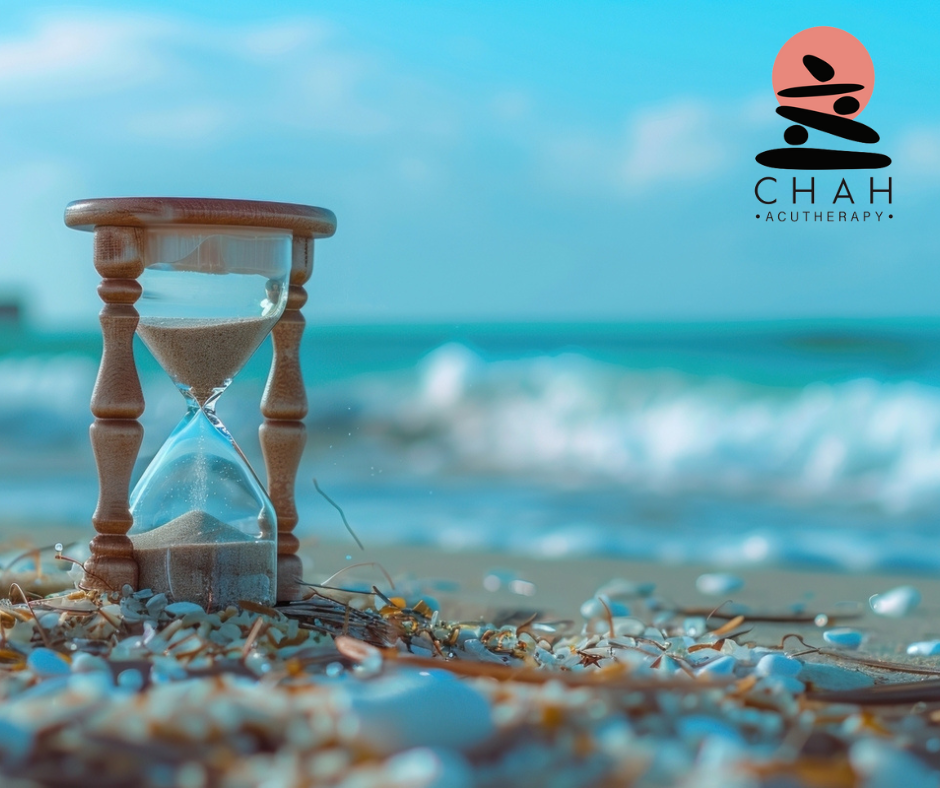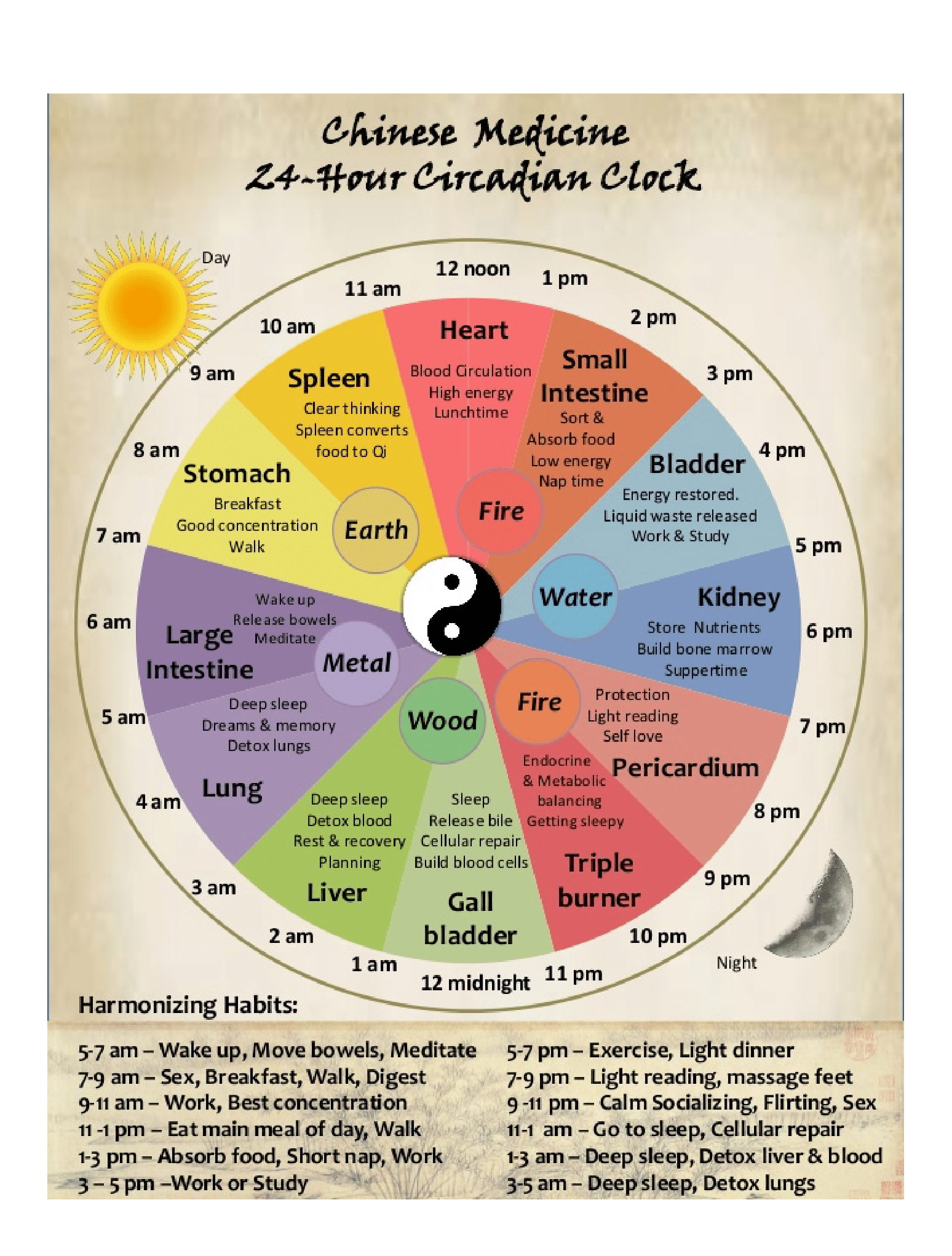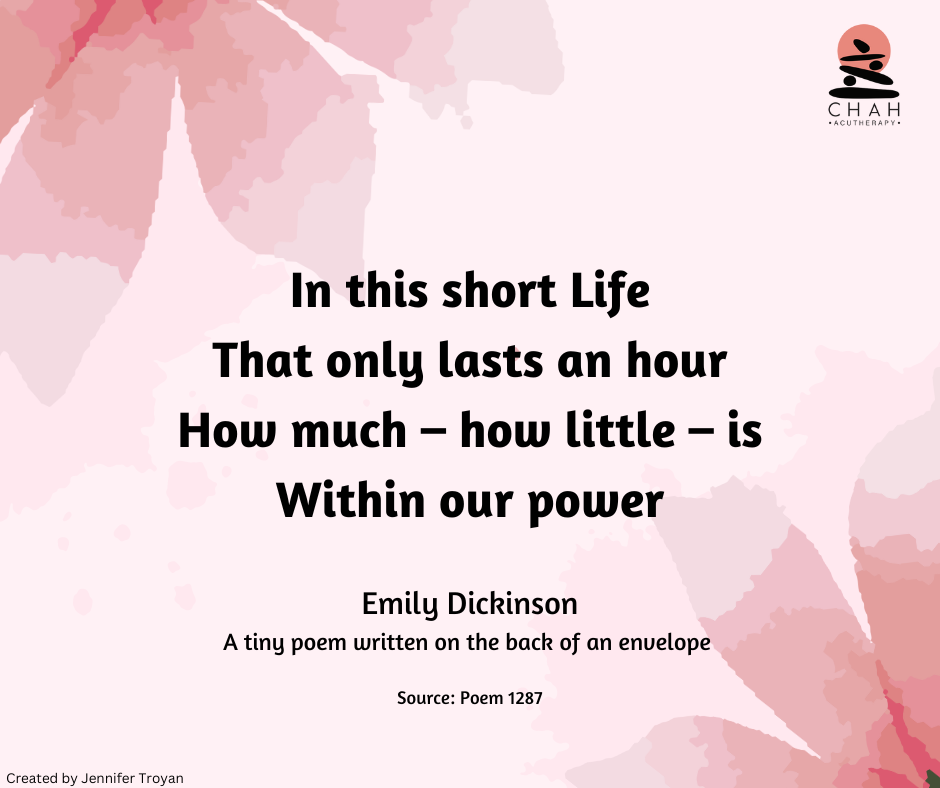
Circadian Rhythms of Life
By Maria Chah, DOM, AP & Jennifer Troyan
This article is part 1 of a 2-part series.
In this article we are focusing on circadian rhythms from a Chinese Medicine perspective. We have had requests for this topic and are excited to share about this timely topic (pun intended).
Understanding and knowledge contribute to our health. Let us start with what circadian rhythms mean. It is the master clock of the internal rhythms of your body.
Merriam-Webster defines it as:
Circadian adjective
cir·ca·di·an
: being, having, characterized by, or occurring in approximately 24-hour periods or cycles (as of biological activity or function)
circadian rhythms in activity
...refers to the inherent cycle of about 24 hours that appears to control various biological processes, such as sleep, wakefulness, and digestive activity.
To understand the circadian rhythms of life, we also need to understand the basic concepts of Yin and Yang laws and principles, as well as their qualities. The qualities of Yin and Yang have action and these actions are expressed in Qi types.
Qi means life force (aka chi). Yin is considered a feminine quality and has the action of going downward and solidifying. It is what turns rarefied energy into more substantial energy and unsubstantial energy into substantial energy. Yin has a quality of water, night, feminine, nurturing, shade, solid, stillness, inwardness, while Yang has the quality of expansion.
You cannot touch Yang qualities, but it has action and is not solidified, it is rarefied. It can be warm and creates growth. So, it has an up and outward movement like males do, always providing, with energy like the sun.
Sidebar - meaning of rarefied energy:
"Rarefied energy" refers to energy that is refined, subtle, or elevated to a higher level of purity or concentration. In various philosophical and spiritual contexts, it often refers to energy that has been purified or refined through practices such as meditation, spiritual discipline, or energetic work. This term implies that the energy has been elevated or intensified, becoming more potent or refined in its nature.

The four main principles of Yin and Yang are that they are interdependent, mutual consumption, opposition and inter transformation. Simply said, all work together to influence the whole - understanding things in relation to each other. Everything has Yin and Yang in them.
Yin can turn into Yang. A metaphor describes this partnership well - the mountain has a shady side and a sunny side. We know that the mountain stands by itself, but it can change from Yin (shady) to Yang (sunny) and Yang to Yin based on the circadian rhythm movement of the Sun and the Moon.
When it comes to Yin and Yang, think opposite or opposing such as the examples shown in the image above. The whole idea is to have everything in balance.
To understand circadian rhythm is to understand also not only the principles of Yin and Yang, but the aspects and the functions of Qi (aka chi or life force or energy). We mentioned their qualities, laws, and how they tie into circadian rhythm. Now let us go over how it travels through the body using the chi types.
The six chi (energy flow) types:
o Energy flows above - ascends
o Descends
o Goes in
o Moves outward
o Can rebel
o Can stagnate
Those are your six energy flows and this particular energy flow ties into the Shen cycle and the ko-cycle by which the five elemental theories speaks into the relationships between the elements. The Shen cycle is the regular flow which goes from the heart (fire), to the stomach (earth), to the lungs (metal), to the Kidneys (water), to the Liver (wood), and back to the heart (fire) element.
With the Shen cycle, when everything is in perfect balance, homeostasis, you sleep a good seven to eight hours a night, you feel rested the next day, every part of your biology and physiology is harmonized and functioning and you feel well and alive, vibrant, and vital.
When you are not in a Shen cycle, we call the opposite or reverse cycle a ko-cycle. In ko-cycle, there is one element that might be an enemy, rebelling, stagnating, deficient, or in excess which breaks that Shen cycle.
When you are sleeping, Qi energy is creating expansion and contraction - moving subtle substances, such as blood and fluids, within a container called the body. Each cell in your body is pact and concentrated with Energy “Qi” cell flowing at a specific time rhythm to take care of each major internal organ. When the body is not properly nourished, rested, and cared for in accordance to its natural constitutional rhythm, the body’s energy begins to falter. Hence, the Ko-Cycle begins its opposing rhythm.
If you were anticipating rhythm, notice that you wake up at a certain hour every evening maybe 3-5am, to go to the bathroom, or you get up and don't know why you can't go back to sleep, or you have a circadian rhythm that no matter what time you go to bed you always wake up at 7:30am, that's your biological clock. It has to do with the way Shen flows through your body and which element is best flowing.
The circadian rhythms focus on where the chi flows inwardly, where it is going in the Yin. Like when the moon rises, that's Yin time (nighttime) and the blood dives deep into your body to nourish the organs. They have a time where the energy is most abundant. For example, when you are sleeping at 12-2am, it is a time where the blood flows the most to the liver. So, if you wake up between 12-2am every night, then your liver is not getting the nourishment it needs and its Shen cycle is out of balance.
If you wake up between 3-5am, that would be your lung cycle. Your chi is not flowing in full form to nourish the lungs and so forth. So that is the circadian rhythm, and they work in opposition and in relationship in the Shen cycle and the ko-cycle when they are out of balance.

Knowing the patient’s circadian rhythm is a vital tool acupuncture physicians use to determine what meridian channels, and what elements are out of balance. It is one of the primary diagnostic guides in helping the practitioner navigate the origins of the patient's issues for point selection planning. An effective diagnostic makes for an effective Acupuncture treatment in helping the body maintain circadian rhythm resilience.
Try this exercise:
Take a week or two and log the times you wake up during the night and every morning and review the chart to see what it tells you. Share it with your acupuncturist or alternative health professional. It will give great insight into what is happening within your body, and it will highlight areas to address to bring your body back into balance. It is all about creating balance. Happy body, happy life.
Check out next month’s article where we delve deeper into this topic.

Information in this article and on this website is intended for informational or educational purposes only. This information does not replace professional medical advice, diagnosis, or treatment. If you have questions about a medical condition, always seek the advice of a doctor or other qualified health professional.
To learn more about our services, please contact our office at 561-249-0447 for a consultation on how to start your annual wellness optimization. During the consultation, we can provide guidance on the best treatment modalities to improve or enhance your state of wellness the TCM way.
Your health team: Chah Acutherapy - We are here for you.
